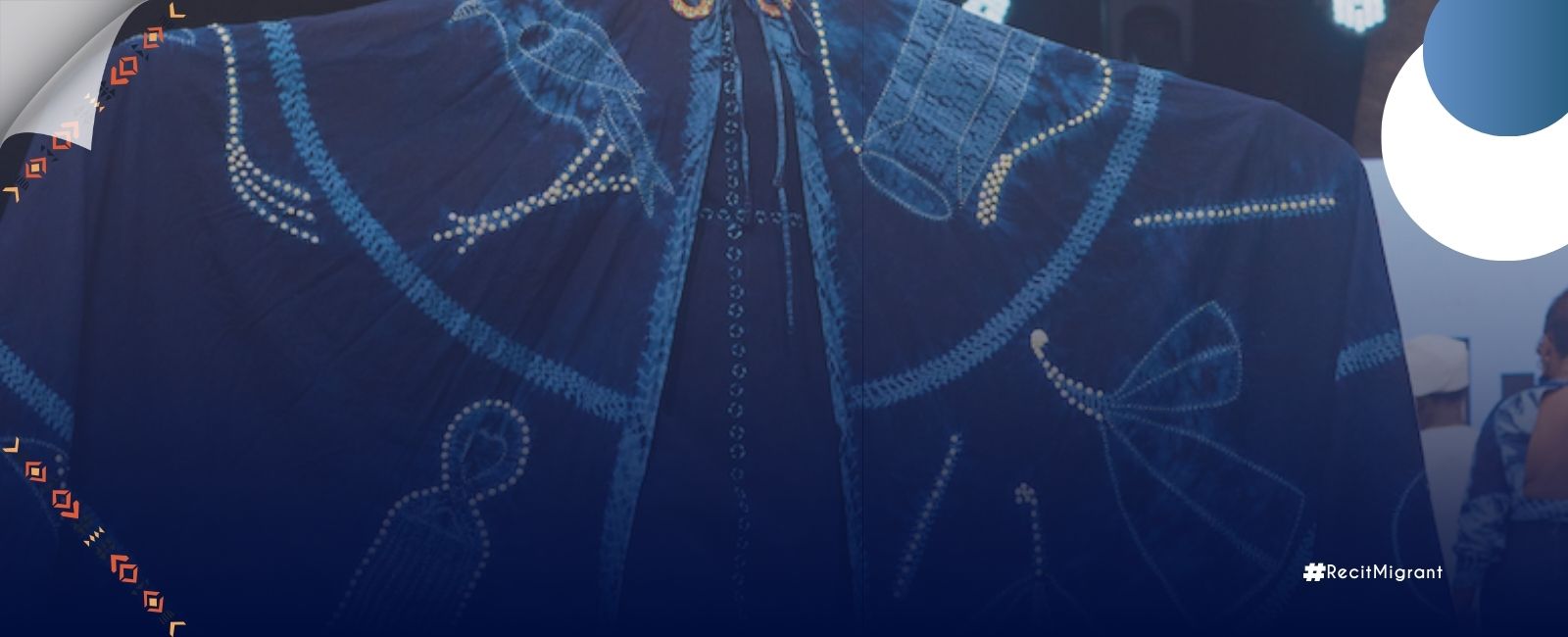

Indigo fabric is one of the most iconic features of Beninese culture. Thanks to the creativity of local designers and entrepreneurs, it is currently enjoying a revival. However, its current revival is just one part of its deep and fascinating history.
Spread across several regions of Africa and beyond, indigo fabric took root in Benin, becoming a symbol of prestige, status and elegance. As an element of intangible cultural heritage, it is shared by numerous communities in West and Central Africa, connecting them through tradition, identity and artistry.
Thanks to its history and intricate manufacturing process, indigo fabric remains a luxury item to this day. While it was once valued primarily for its practicality, it is now sought after for the prestige it conveys.
Indigo, known locally as ‘ahovo’ (meaning ‘prestigious fabric’ in the Fon language of southern Benin), is an integral part of the country’s cultural heritage. Its craftsmanship and symbolism continue to resonate across Africa and beyond, evolving through dialogue, global migration and cultural exchange.
A blend of tradition, heritage and diversity
This fabric embodies the ancestral knowledge of the Nagot people, passed down through generations and migrations. It has been considered prestigious attire in the Nagot and Bamiléké regions in the past and to this day. “Not just anyone wore indigo,” said Nadia Adanlé, a Beninese fashion designer committed to reviving this emblematic fabric and a cornerstone of Beninese culture, in a recent television programme.
However, the use of this prestigious fabric was about to take on a new meaning.
“In the Gulf of Guinea, we were influenced by the Portuguese. They taught us that when someone dies, we should wear clothing in a colour associated with them. If the deceased was elderly with white hair, for example, we would wear white. If they were young with black hair, we would wear black. But if they were somewhere in between, we would wear midnight blue. Since midnight blue was already part of our culture, we incorporated it into our mourning attire. ‘Even before that, when we were in mourning, we used to say “mi nan do Lutu” (“we are going to wear Lutu”) or “min nan dé Lutu” (“we are going to choose the mourning loincloth”), explains the designer, who now promotes this ancestral craft using innovative dyeing and design techniques.
In Portuguese, ‘luto’ means ‘mourning’. Under this influence, indigo fabric gradually became associated with bereavement. It also became associated with widowhood, as Fon traditions included specific mourning practices for widows. “This heritage has shaped our relationship with indigo,” explains the founder of Couleur Indigo, a company that produces 100% Beninese indigo-dyed textiles, which are marketed under the Élu brand.
Passing on a cultural heritage
In Benin, indigo fabric is still crafted using traditional methods, particularly the dyeing of indigo leaves. This technique was inherited from the Aniambossou community in Ouidah, and it remains a source of cultural pride to this day.
As in many other African countries, local artisans and businesses celebrate this distinctive skill.
To promote indigo, Benin hosts major cultural events such as the Symposium on African Indigo (SIA) and the Great Night of Indigo. These events bring together professionals and communities from across West and Central Africa.
These gatherings celebrate creativity and provide a platform to discuss the professionalisation of indigo production and strategies for passing this heritage on to future generations.
In this spirit, designer Nadia Adanlé took on the challenge of writing a book dedicated to showcasing African textiles through the voices of Africans, entitled “Élu, ce bleu en fête!” (Chosen, the festive blue!).


